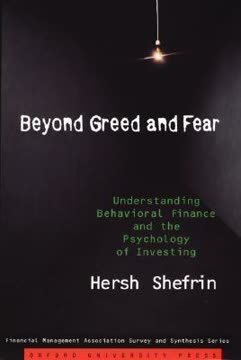Key Takeaways
1. Behavioral Finance: Psychology's Pervasive Influence on Financial Decisions
This book is about recognizing the influence of psychology on oneself, on others, and on the financial environment at large.
Beyond Greed and Fear. Behavioral finance applies psychological insights to understand financial behavior, moving beyond simplistic notions of "greed and fear." It acknowledges that human desires, goals, motivations, and errors significantly impact financial practitioners, from individual investors to corporate executives. This field seeks to identify, understand, and ultimately avoid costly mistakes stemming from these psychological influences.
Errors and Biases. The core of behavioral finance lies in recognizing that financial practitioners are prone to specific, repeatable errors. These errors arise from perceptual illusions, overconfidence, reliance on rules of thumb, and the sway of emotions. By understanding these patterns, practitioners can become more aware of their own vulnerabilities and those of others in the financial landscape.
For Practitioners, By Practitioners. This book is written for practitioners, including portfolio managers, financial planners, investors, analysts, and corporate executives. It aims to equip them with the knowledge to recognize, understand, and avoid psychological pitfalls in financial decision-making, ultimately leading to more informed and successful outcomes.
2. Heuristic-Driven Bias: Imperfect Rules, Predictable Errors
The general lesson from Beyond Greed and Fear is that psychology permeates the entire financial landscape.
Rules of Thumb. People often rely on mental shortcuts, or heuristics, to process information and make decisions. While heuristics can be efficient, they are often imperfect and lead to predictable biases. These biases can significantly impact financial judgments, causing practitioners to deviate from rational decision-making.
Common Heuristics. Several key heuristics are identified, including:
- Availability: Overemphasizing readily available information.
- Representativeness: Judging based on stereotypes.
- Anchoring-and-Adjustment: Relying too heavily on initial information.
- Overconfidence: Overestimating one's own abilities.
- Aversion to Ambiguity: Preferring the familiar over the unknown.
Real-World Impact. These heuristics influence various financial decisions, from analysts' earnings forecasts to investors' portfolio choices. Recognizing these biases is crucial for mitigating their negative effects and improving financial outcomes.
3. Frame Dependence: How Presentation Shapes Perception
If you transfer a dollar from your right pocket to your left pocket, you are no wealthier.
Form Matters. Traditional finance assumes frame independence, meaning that the way a decision is presented should not affect the outcome. However, behavioral finance recognizes that the framing of a decision problem significantly influences perceptions of risk and return. This frame dependence can lead to inconsistent and potentially irrational choices.
Key Concepts. Important concepts related to frame dependence include:
- Loss Aversion: The tendency to feel the pain of a loss more strongly than the pleasure of an equivalent gain.
- Mental Accounting: The way people categorize and manage their money in separate mental accounts.
- Hedonic Editing: The tendency to prefer certain ways of framing gains and losses.
Real-World Examples. Frame dependence is evident in various financial contexts, such as investors' reluctance to realize losses, their preference for cash dividends, and their reactions to market volatility. Understanding these framing effects is essential for making more objective and rational financial decisions.
4. Market Inefficiency: Errors Create Opportunities and Risks
As long as there continue to be people like you, we'll make money.
Deviations from Value. Behavioral finance argues that heuristic-driven biases and framing effects can cause market prices to deviate from fundamental values. This inefficiency creates both opportunities and risks for investors. While some may profit from exploiting these mispricings, others may fall victim to them.
Examples of Inefficiency. Several market anomalies are attributed to behavioral factors, including:
- The Winner-Loser Effect: Past losers outperforming past winners.
- Post-Earnings Announcement Drift: Stock prices continuing to move after earnings announcements.
- The Equity Premium Puzzle: The historically high return on stocks relative to risk-free assets.
The Smart Money. While market inefficiencies exist, exploiting them is not always easy. Smart-money investors recognize the risks associated with sentiment-based trading and avoid overconfidence. They understand that mispricing can persist for extended periods and that sentiment-based risk can be substantial.
5. The Illusion of Validity: Why We Cling to False Beliefs
The index is useless, not because it does not provide some good forecasts, but because it also provides so many bad forecasts.
Confirmation Bias. People tend to seek out information that confirms their existing beliefs while ignoring or downplaying contradictory evidence. This confirmation bias can lead to the illusion of validity, where individuals maintain confidence in inaccurate or ineffective strategies. This is why investors continue to believe that the sentiment index is useful despite strong evidence to the contrary.
The Power of Stories. Stories and anecdotes can be compelling, but they can also be misleading. Relying on selective evidence or personal experiences can reinforce false beliefs and hinder objective decision-making. It is important to consider a broad range of data and avoid drawing conclusions based on limited or biased information.
The Need for Skepticism. A healthy dose of skepticism is crucial for avoiding the illusion of validity. Continuously questioning assumptions, seeking out disconfirming evidence, and critically evaluating information sources can help investors make more informed and rational decisions.
6. Individual Investors: Myopia, Self-Control, and Emotional Investing
Investors need to overcome myopia and exercise self-control in order to save for retirement.
Myopia and Self-Control. Individual investors often struggle with myopia, focusing on short-term gains and neglecting long-term goals like retirement. This shortsightedness, combined with a lack of self-control, can lead to inadequate saving and poor investment decisions.
Framing and Mental Accounting. Framing effects and mental accounting play a significant role in individual investors' behavior. For example, investors may be more likely to save for retirement if contributions are automatically deducted from their paycheck or if they frame dividends as "income" rather than "capital."
Strategies for Success. To overcome these challenges, individual investors can:
- Set clear financial goals and develop a long-term plan.
- Automate savings and investment contributions.
- Use mental accounting to segregate funds for specific purposes.
- Seek professional financial advice.
7. Institutional Investors: Navigating the Complexities of Money Management
People are imperfect processors of information and are frequently subject to bias, error, and perceptual illusions.
The Money Management Industry. Institutional investors, such as pension funds and endowments, face unique challenges in managing large portfolios. They must navigate complex organizational structures, conflicting incentives, and the pressures of peer comparison.
Behavioral Pitfalls. Institutional investors are not immune to behavioral biases. They may fall prey to:
- The Illusion of Control: Overestimating their ability to select superior money managers.
- Herding: Following the crowd and investing in popular styles.
- Regret Aversion: Avoiding decisions that could lead to criticism or job loss.
Improving Decision-Making. To mitigate these biases, institutional investors can:
- Establish clear investment objectives and risk parameters.
- Implement a rigorous manager selection process.
- Focus on long-term performance rather than short-term results.
- Promote transparency and accountability.
8. Corporate Finance: Hubris, Takeovers, and the Winner's Curse
Because of hubris and overconfidence, the managers of acquiring firms often overpay for their targets.
Hubris and Overconfidence. Corporate executives, like other individuals, are prone to overconfidence and hubris. This can lead them to overestimate their ability to successfully integrate acquisitions and create value.
The Winner's Curse. The winner's curse occurs when the acquiring firm overpays for the target, resulting in a loss for shareholders. This is often driven by hubris and a failure to adequately assess the risks and challenges associated with the merger.
Mitigating the Risks. To avoid the winner's curse, corporate executives should:
- Conduct thorough due diligence and independent valuations.
- Avoid bidding wars and excessive premiums.
- Focus on strategic fit and cultural compatibility.
- Be wary of their own biases and seek objective advice.
9. Options and Futures: Speculation, Sentiment, and Volatility
People are imperfect processors of information and are frequently subject to bias, error, and perceptual illusions.
Speculation and Sentiment. Options and futures markets are often characterized by high levels of speculation and volatility. Investor sentiment, driven by emotions and biases, can significantly impact prices in these markets.
Key Concepts. Important concepts for understanding options and futures markets include:
- Implied Volatility: The market's expectation of future volatility, derived from option prices.
- The Smile Effect: The non-flat pattern of implied volatilities across different strike prices.
- The Call/Put Ratio: A measure of investor sentiment based on the relative volume of call and put options.
Behavioral Influences. Heuristic-driven biases, such as overconfidence and the illusion of control, can lead to excessive trading and poor investment decisions in options and futures markets. Understanding these biases is crucial for managing risk and avoiding costly mistakes.
10. The Power of Stories: Illustrating Behavioral Concepts in Finance
I think most investors would be better off holding a well-diversified set of securities, mainly in index funds, than they would be trying to beat the market.
Stories as Tools. Stories and anecdotes can be powerful tools for illustrating behavioral concepts and making them more relatable. By examining real-world examples, readers can gain a deeper understanding of how psychological factors influence financial decisions.
Ubiquitous and Germane. Behavioral phenomena are both ubiquitous and germane. They are ubiquitous because they are present in virtually every financial decision. They are germane because they can have a significant impact on outcomes.
A Word of Caution. While behavioral finance can provide valuable insights, it is not a foolproof guide to investment success. Overconfidence and a misunderstanding of behavioral principles can be just as dangerous as ignorance. A well-diversified portfolio and a long-term perspective remain essential for most investors.
Last updated:
FAQ
What is Beyond Greed and Fear by Hersh Shefrin about?
- Behavioral finance focus: The book explores how psychological biases and emotions influence financial decisions, challenging the traditional view of rational investors and efficient markets.
- Three core themes: Shefrin organizes the field around heuristic-driven bias, frame dependence, and market inefficiency, showing how these shape investor and market behavior.
- Practical application: The book aims to help practitioners recognize, understand, and avoid costly psychological errors in investing and financial management.
Why should I read Beyond Greed and Fear by Hersh Shefrin?
- Comprehensive introduction: It was the first major book to comprehensively cover behavioral finance, making it essential for anyone interested in the psychology of investing.
- Real-world relevance: Shefrin uses numerous stories, case studies, and empirical evidence to illustrate behavioral concepts in action, making the material accessible and practical.
- Improved decision-making: Readers gain tools to identify and mitigate their own biases, leading to better investment and financial choices.
What are the key takeaways from Beyond Greed and Fear by Hersh Shefrin?
- Psychology drives markets: Human desires, motivations, and errors significantly impact financial decisions and market outcomes.
- Three behavioral pillars: Heuristic-driven bias, frame dependence, and market inefficiency are central to understanding why markets deviate from rational models.
- Recognizing and managing bias: By understanding these concepts, investors and professionals can avoid common pitfalls and improve their financial performance.
What are the three main behavioral finance themes in Beyond Greed and Fear by Hersh Shefrin?
- Heuristic-driven bias: Investors use mental shortcuts like availability and representativeness, leading to systematic errors in judgment.
- Frame dependence: The way choices are presented (framed) affects investor decisions, especially regarding risk, gains, and losses.
- Market inefficiency: Psychological biases cause persistent mispricing in markets, challenging the notion of efficient markets.
How does Beyond Greed and Fear by Hersh Shefrin define and illustrate heuristic-driven bias in investing?
- Mental shortcuts: Investors rely on heuristics such as availability (using easily recalled information) and representativeness (stereotyping), which can distort beliefs.
- Common errors: Examples include gambler’s fallacy, overconfidence, and anchoring, all of which lead to predictable mistakes in judgment.
- Market impact: These biases contribute to phenomena like the winner-loser effect and post-earnings-announcement drift, affecting asset prices and returns.
What is frame dependence in Beyond Greed and Fear by Hersh Shefrin, and how does it affect investor behavior?
- Framing effects: Investors’ choices are influenced by how options are presented, not just by the outcomes themselves.
- Loss aversion and mental accounting: Investors feel losses more intensely than gains and separate gains/losses into mental accounts, impacting risk tolerance and decision-making.
- Regret and self-control: Fear of regret and the need for self-control shape behaviors like holding losing stocks too long or preferring steady dividends.
How does Beyond Greed and Fear by Hersh Shefrin explain market inefficiency and its evidence?
- Persistent mispricing: Psychological biases cause prices to deviate from fundamental values, leading to anomalies like the winner-loser effect and post-earnings-announcement drift.
- Limits of arbitrage: Even sophisticated investors face risks and constraints that prevent them from fully correcting mispricings.
- Empirical support: Real-world cases, such as Long-Term Capital Management’s collapse, illustrate how sentiment-based risk and behavioral errors can overwhelm rational strategies.
What role does overconfidence play in investing according to Beyond Greed and Fear by Hersh Shefrin?
- Narrow confidence intervals: Investors set overly tight expectations, leading to frequent surprises and unexpected losses.
- Excessive trading: Overconfident investors trade more than is profitable, often underperforming after costs.
- Illusion of control: Many overestimate their ability to predict or influence market outcomes, resulting in risky and biased decisions.
How does Beyond Greed and Fear by Hersh Shefrin address loss aversion and "get-evenitis"?
- Loss aversion defined: Investors experience losses about 2.5 times more intensely than gains, leading to risk-averse behavior.
- Get-evenitis: This is the tendency to hold onto losing investments too long in hopes of breaking even, often resulting in greater losses.
- Disposition effect: Investors sell winners too early and hold losers too long, a pattern observed in both individual and institutional investors.
What does Beyond Greed and Fear by Hersh Shefrin reveal about portfolio construction and diversification mistakes?
- Naive diversification: Many investors use simple rules like the 1/n heuristic, dividing assets equally rather than optimizing risk and return.
- Home bias and familiarity: Investors overweight domestic and familiar stocks, missing out on global diversification benefits due to ambiguity aversion.
- Emotional layering: Portfolios are often built in layers to address security, potential, and aspiration, reflecting emotional needs and risk perceptions.
How does Beyond Greed and Fear by Hersh Shefrin explain anomalies in mutual funds, IPOs, and closed-end funds?
- Mutual fund misframing: Investors chase past winners due to representativeness bias and are misled by opaque fund structures and marketing tactics.
- IPO underpricing and underperformance: IPOs are often underpriced due to winner’s curse and bandwagon effects, but tend to underperform in the long run as optimism fades.
- Closed-end fund puzzle: Persistent discounts and premiums are explained by investor sentiment, framing of dividends, and misunderstanding of leverage.
What are the practical implications and real-world applications of behavioral finance in Beyond Greed and Fear by Hersh Shefrin?
- Improved investment strategies: Understanding behavioral biases helps investors and professionals design better portfolios and avoid costly mistakes.
- Market anomalies exploited: Strategies like exploiting post-earnings-announcement drift have been successfully implemented by asset managers.
- Corporate finance and takeovers: Behavioral factors like hubris and loss aversion influence major corporate decisions, including mergers and acquisitions, often leading to value destruction.
Review Summary
Beyond Greed and Fear receives mixed reviews, with an average rating of 3.72 out of 5. Readers appreciate its comprehensive overview of behavioral finance concepts and real-life examples. Many find it informative and insightful, particularly for traders and investors. The book is praised for its in-depth exploration of psychological factors in financial decision-making. However, some readers find it technical and dense, requiring careful reading. Critics note that some research is dated, and a few reviewers feel it lacks practical applications. Overall, it's considered a valuable resource for understanding market behavior and personal investment psychology.
Similar Books
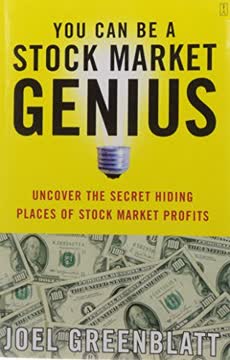


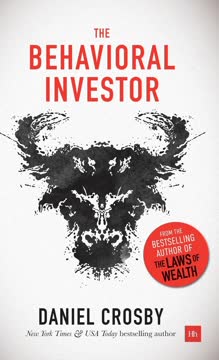

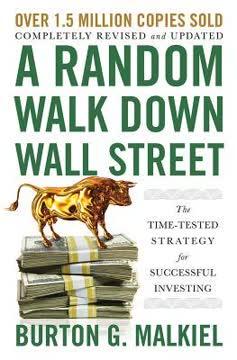
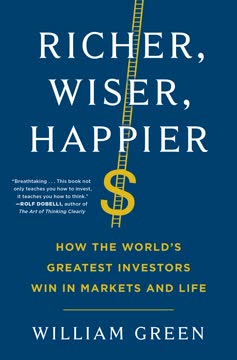


Download PDF
Download EPUB
.epub digital book format is ideal for reading ebooks on phones, tablets, and e-readers.
